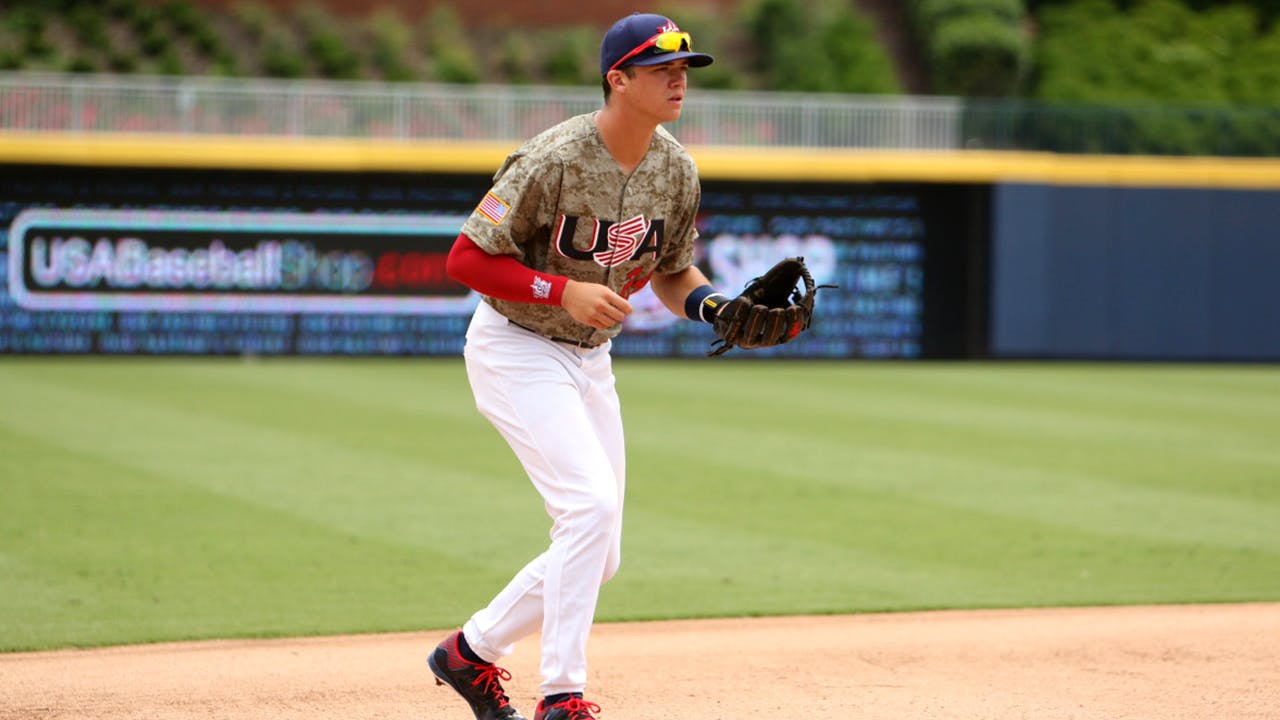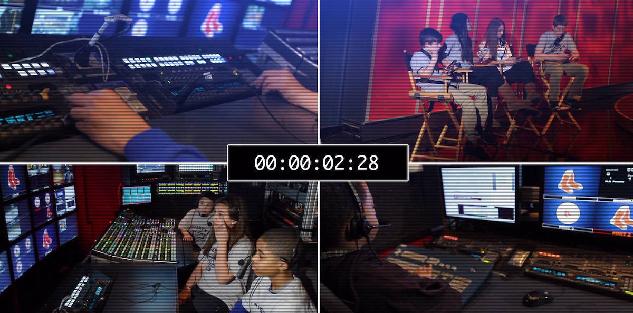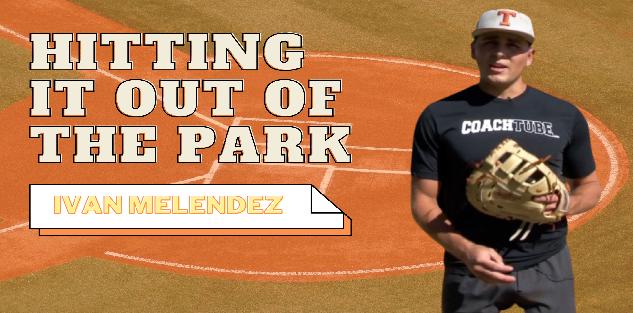Featured courses
- Understanding The Shift by Brandon Ogle
- Two Drills to Improve Outfield Movement and Communication by Grant Young
- The Ultimate Resource For Coaching Youth Baseball by Jackson Chlebowy
- Become a Master at Bunting by Brandon Ogle
- 5 Reasons Why There Is More To Good Base Running Than Just Speed by Brandon Ogle
- Three Injury-Prevention Tips For Your Offseason Pitching Program by Grant Young
- How to Teach Hitting to the Next Generation by Grant Young
- Developing Defensive-Minded Baseball Catchers by Grant Young
- 3 Baserunning Tips to Score More Runs in Baseball by Grant Young
- 5 Outfield Drills to Work on in Season by Alec Burris
- Keys For Scoring More With Runners on First and Third Base by Grant Young
- How to Develop Your Game to Become a Five-Tool Player by Brandon Ogle
- 3 Coaches Share the Keys to Running Baseball Practice the Right Way by Grant Young
- Four Drills to Sharpen a Baseball Hitter’s Vision at the Plate by Grant Young
- Four Quotes to Hit Better With Two-Strikes by Grant Young
- Four of Former MLB Pitcher Juan Nieves’ Movement-Based Pitching Drills by Grant Young
- Two Tips For Developing an Elite Baseball Bullpen by Grant Young
- Overcoming the Four Challenges of Indoor Baseball Practices Because of Weather by Grant Young
- Three Tips to Make Your Baseball Team Mentally Tougher by Grant Young
- Three Priceless Philosophies to Motivate Your Baseball Team by Grant Young
- Three Offseason Baseball Drills to Simulate Competition by Grant Young
- Three Baseball Offseason Strength and Conditioning Essentials by Grant Young
- Important Ways to Improve Your Baseball Team’s Baserunning by Grant Young
- Three Ways to Perfect Hitting Mechanics From an MLB Icon by Grant Young
- Catchers can influence pitchers...for bad or good by Drew Johnson
- Throwing Strikes and Playing Good Defense Equals Wins by Jose Ortiz
- Legendary Indiana Head Baseball Coach Bob Morgan’s Offensive Theory by Grant Young
- Tennessee Head Baseball Coach Tony Vitello on How to Practice Baserunning by Grant Young
- Three Great T-Ball Drills For Youth Baseball Players by Grant Young
- How to Manage a Baseball Pitching Staff by Grant Young
- Three Uncommon Tips to Become a Better Hitter by Grant Young
- How a Baseball Coach Can Develop Strike Throwers by Grant Young
- Drills to Develop Elite Baseball Outfielders by Grant Young
- Baseball Training Exercises to Strengthen Arm and Bat Speed by Grant Young
- How to Use Bunting to Score More Runs by Grant Young
- How To Build An Elite Baseball Infielder by Grant Young
- Three Drills to Improve Your Baseball Team's Infield Play by Grant Young
- Three Keys to Curating a Pitching Staff’s Success by Grant Young
- 3 Techniques to Develop a Baseball Player’s Hitting Approach by Grant Young
- How to Cultivate Confidence Within Your Pitchers by Grant Young
- 5 Every Day Drills To Help You Become A Better Catcher by tyler Linderman
- How to Throw A Curveball by Brandon Ogle
- How to Assemble a Lock-Down Bullpen by Brandon Ogle
- How to Throw a Sinker by Brandon Ogle
- How to be a Smart Baserunner by Brandon Ogle
- Improving a player's slugging average by Phillip Woolgar
- The 8 Fundamentals of Pitching by Drew Johnson
- How to Throw a Deceiving Changeup by Brandon Ogle
- Step Up Your Outfield Defense With These Three Drills by Jose Ortiz
- 8 Baseball Drills Every Player Should Practice by Drew Johnson
- How To Become An Elite Defensive Outfielder by Tyler Linderman
- 5 Tips For Crushing A Curveball by Johnny Grassi
- LEGENDS FOR YOUTH INCLUSION BASEBALL CLINIC by Phil
- Fourteen Ways To Turn A .300 Hitter Into A .210 Hitter by Jay P. Granat, Ph.D.
- How To Become The Ideal Leadoff Man by Brandon Ogle

Three Drills to Improve Your Baseball Team's Infield Play
- By Grant Young
Playing the infield in baseball is different from playing any other position because it requires players to be quick on their feet, and be able to contort their body in seconds. This is just one of the reasons why infield positions are often considered the most difficult defensive positions on the field. This means a team’s best infielders are often their team’s best — and most important — players, because of the various tasks they must take part in.
There are many baseball infield drills that can help improve a team’s overall infield play. While many of these drills seem simplistic and utilize the same basic fundamentals like keeping a wide base stance, butt down, and hands out, it’s practicing these rills repeatedly which is going to sharpen an infielder’s skillset and minimize any risk of errors during the game. After much repetition, the players' confidence and ability to make big plays will grow.
And a set of drills by Ed Servais are as good of confidence builders as any.
Coach Servais has been the head coach of the Creighton University baseball program for the past 21 seasons and has guided the Bluejays to five NCAA Tournament appearances (2005, 2007, 2011, 2012 & 2019).
Known as a coach who emphasizes team defense, Servais’ teams have consistently been among the nation’s best in fielding percentage. In his first season (2004) the Bluejays’ .982 fielding percentage led the country. Creighton has repeated that impressive feat two additional times (2009 & 2014). During Servais’ 21 seasons at Creighton, the Bluejays have finished in the NCAA’s top-10 in fielding 11 times (including fifth in 2019). Since the Servais era began, Creighton has committed the fewest errors in the nation (758), while also leading the country with a .977 fielding percentage.
All of which is to say that Coach Servais knows how to coach infield. His ‘Infield Play With Drills’ course presents some of the favorite drills he has practiced during his two-plus decades as a Division 1 baseball college coach. In this course, Coach Servais talks about the importance of having good defense in the infield and breaks down everything from positioning to the correct glove, and is perfect for any infield coach who’s looking to get the most out of their infielders.
Activate Your Feet
Coach Servais notes that by the time the ball gets into the “hit zone” (where it will come into contact with the bat), every infielder has to have their feet active.
It doesn’t matter how the infielders choose to activate their feet, as it is going to be different for everybody. But what’s important is that they aren’t standing flat-footed because that will drastically limit their range.
Coach Servais uses the example of top-level tennis players. In order to receive a serve that often comes at over 120 miles per hour, the tennis player has extremely active feet and is physically prepared for the serve to come their way. This is why Coach Servais calls this form of active feet “tennis feet”.
Another means of activating an infielder’s feet is by walking to the hitter, when an infielder takes a right step, a left step, then bounces a little bit as the ball enters the hit zone.
But Coach Servais reiterates that, regardless of how it happens, the bottom line is that a player must get (and keep) their feet active on the infield by any means necessary.
No Panic Drill

One of the more unique (and effective) drills that Coach Servais employs when working with his infielders at Creighton University is what he calls the No Panic Drill.
This drill begins with Coach Servais hitting a ground ball to a player and instructing them to field it cleanly before bobbling the ball intentionally during the process of beginning to throw. From there, he acts his players to regather, shuffle the ball, and then deliver the throw to first base.
The reason Coach Servais has players practice bobbling the ball and still making a play is because it’s going to happen in a game. Every possible scenario that an infielder can (and undoubtedly will at some point) encounter throughout the course of a game should be practiced.
The more a player has practiced these scenarios, the less they’re going to panic when that same scenario arrives during a game. And the less they panic in that circumstance, the better chance they have to make the play and get the out.
Progressions & Multiple Throw Drill
Another infield drill that Coach Servais emphasizes during practices is what he calls the progressions and multiple throw drill.
Coach Servais starts this by having each of his infield position players aside from the first baseman put a ball in their glove. From there, the player is going to pretend as if a coach hit them a ground ball. They’re going to take a normal route to the pretend ground ball, pretend to field it normally, then grab the ball out of their glove and make a throw to first base.
The first baseman will then throw the ball back to the infielder who threw it to them before receiving the next throw.
The reason Coach Servais loves this drill is because it maximizes throwing repetitions without being bogged down by actually hitting the fungo. It also allows Coach Servais to observe his players’ footwork rather than focusing on hitting the fungo.
The next progression from here is that the infielders take the ball out of their gloves and a coach rolls them a ball instead.
The progression after that is a coach hitting the infielders a ball with a fungo like normal.
Coach Servais believes throwing is the biggest issue college (and high school) infielders have. So this allows them to focus on throwing without having to worry about anything else.



